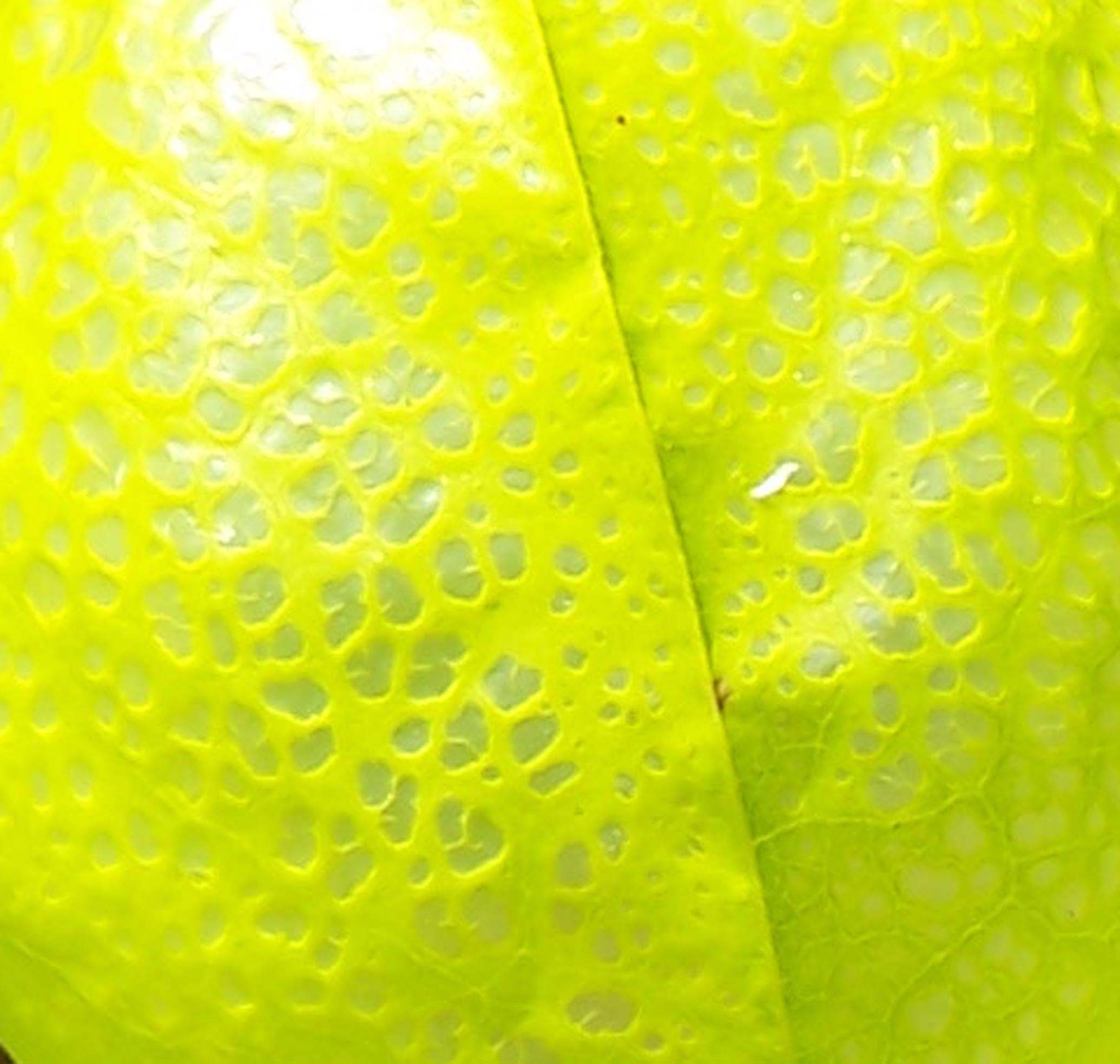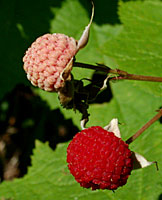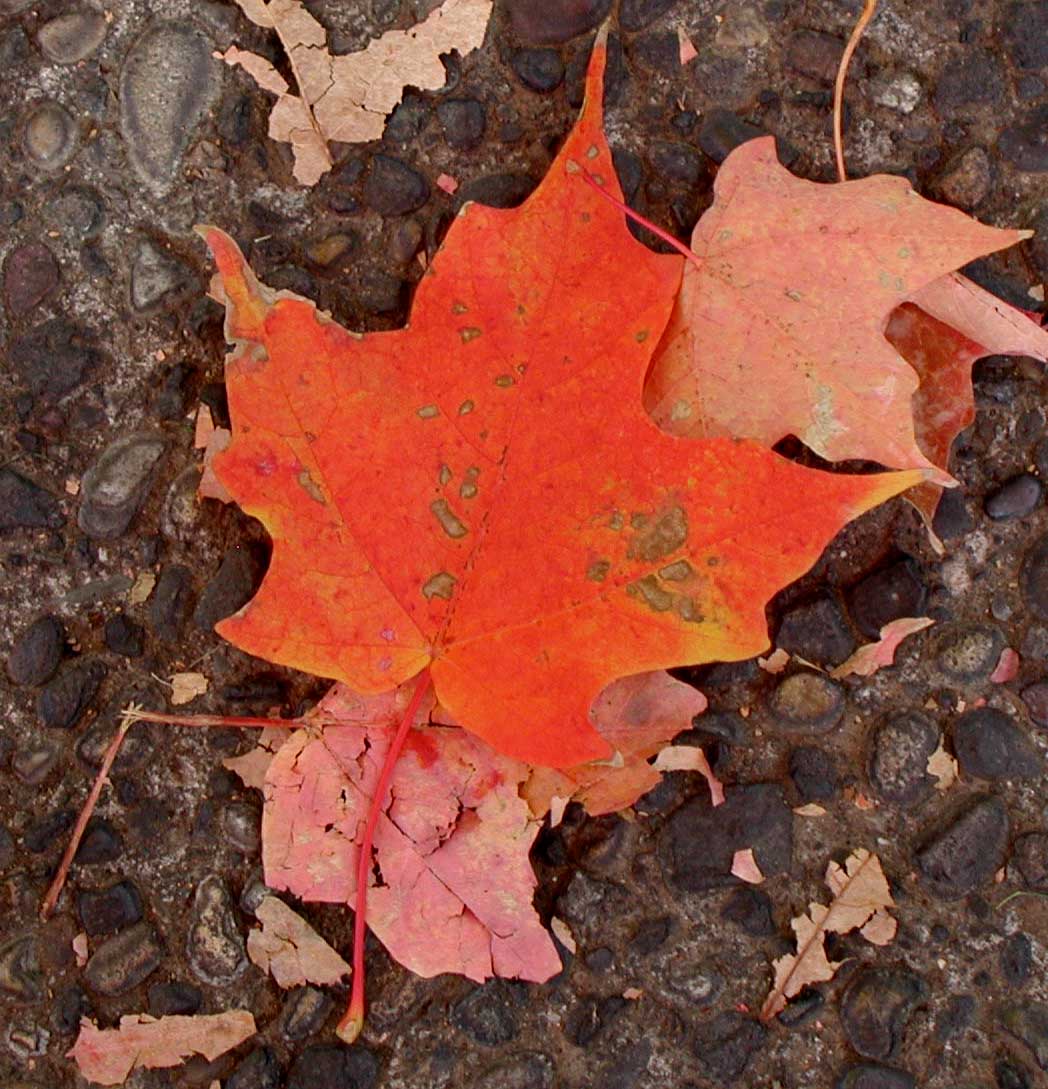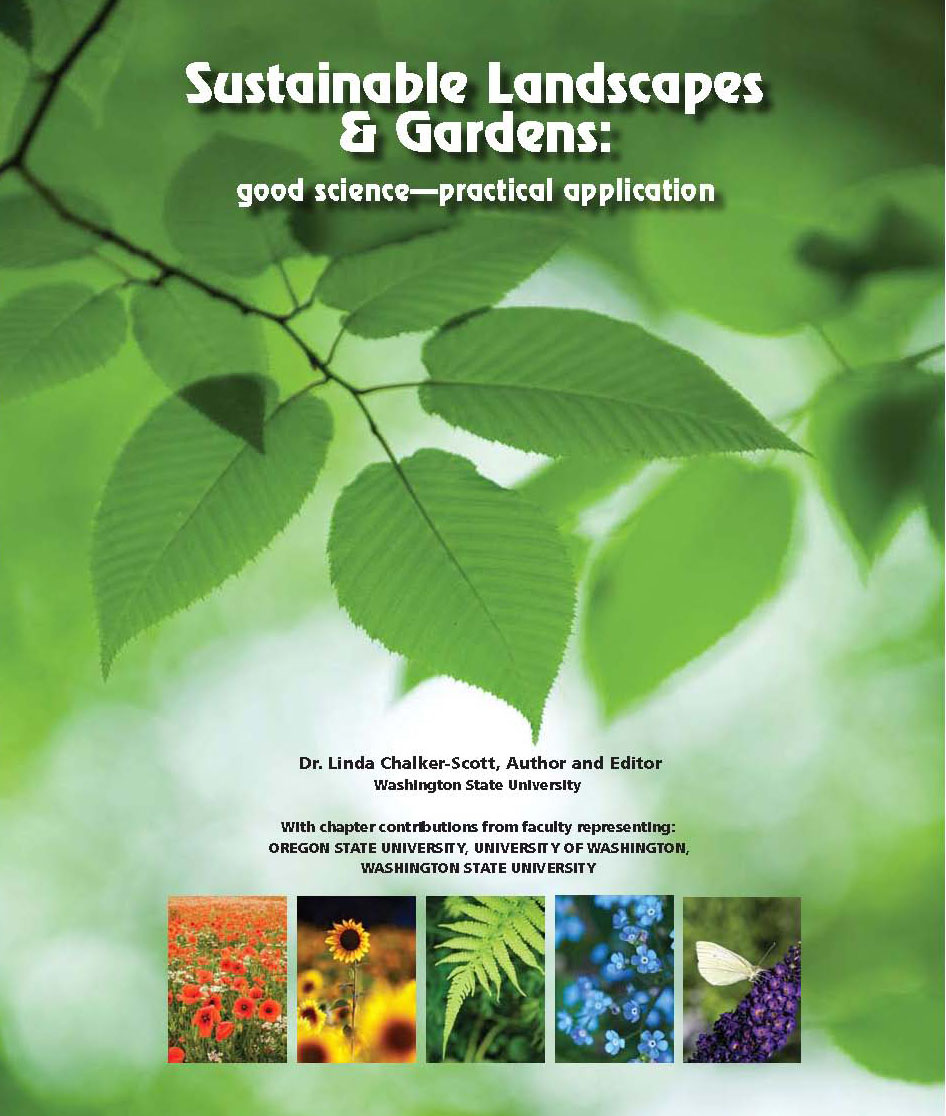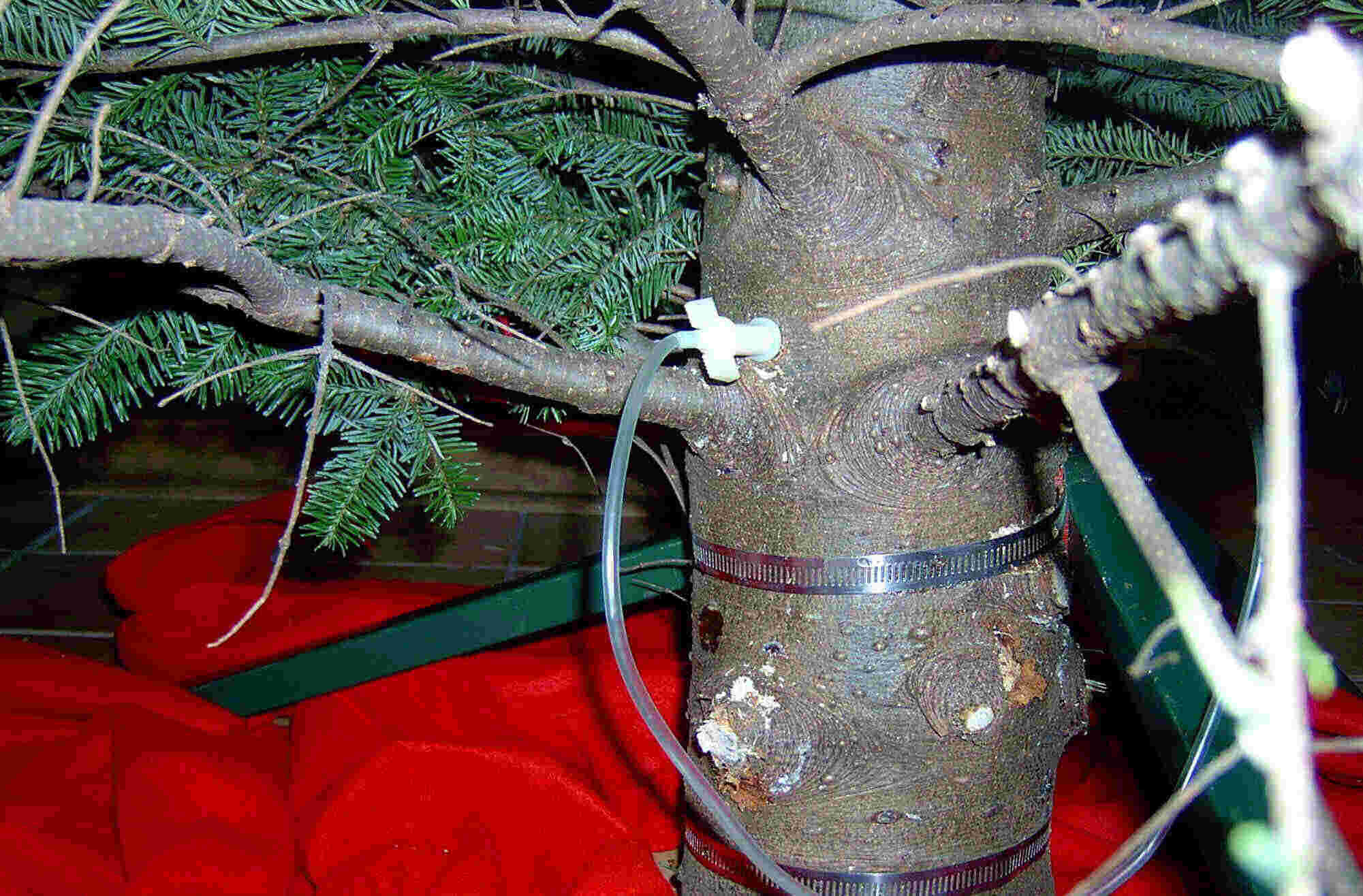The Perennial Plant Association recently released the identity of the PPA Plant of the Year – for 2010 it is Baptisia australis (False Blue Indigo). Various blogs have noted this (including Garden Professor fave Garden Rant) and I’ve read some interesting comments, both pro and con.
True story: I asked for Baptisia at a small rural garden center years ago; the owner said “Don’t have any; but I think I have a Methodist running around here somewheres…” Badda-bump.
Me? I think it is a truly wonderful native perennial. I’ve had great success with it in both Zone 7b and 6a and teach it as a “bread and butter” component plant for the mixed border. As a PPA member, it certainly got my vote on the last ballot (beats the hell out of last year’s Hakonechloa macra ‘Aureola’ – hard to say and even harder to grow in the Southeast).
The great thing about the PPA “Plant of the Year” program is not just in the promotion of that particular species, but that it opens the door for other cultivars and hybrids. Two of my favorites: Baptisia x ‘Twilite Prairieblues’ [sic] and B. x ‘Solar Flare’. Both were bred and/or selected by that delightful genius Dr.Jim Ault, of the Chicago Botanic Garden, and introduced through the Chicagoland Grows program. Pictured are plants that are have only one full year of growth after purchase and planting (nice full gallons to start with; from Saunders Brothers nursery, located in the greater metropolitan area of Piney River, Virginia).
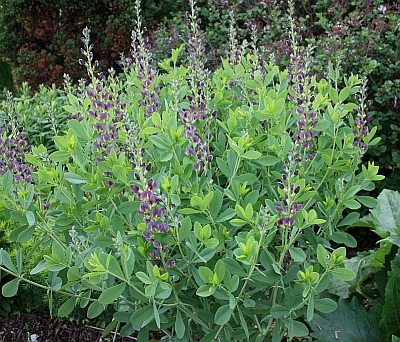
Baptisia x ‘Twilite Prairieblues’ is a cross between B. australis (our PPA winner) and B. sphaerocarpa – a shrubby, tough little guy with yellow flowers. This fortuitous romance yielded quite a jaw-dropping color combination of dusky violet with a yellow keel petal. These puppies are in our campus horticulture garden.
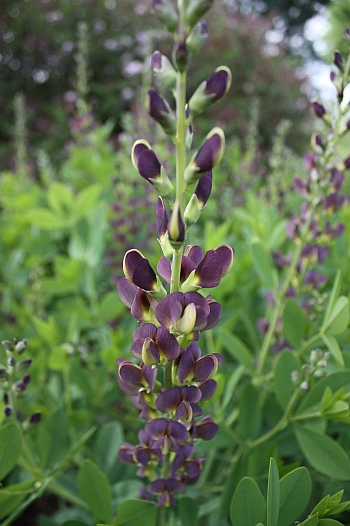
Now take a gander at B. ‘Solar Flare’ – a “complex hybrid, probably open-pollinated” of B. alba (white-flowered), B. tinctoria (yellow-flowered), and B. australis. This is what can happen when a whole bunch of species and hybrids are planted close together (cocktails and/or bees are usually involved). From my own garden:
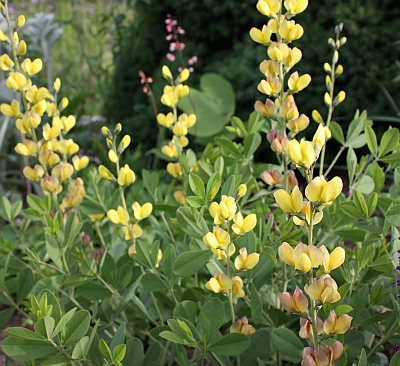
Buttercup-yellow fades to warm apricot, then to plum – the thing absolutely glows in the late afternoon sunshine. Gosh, I miss summer…
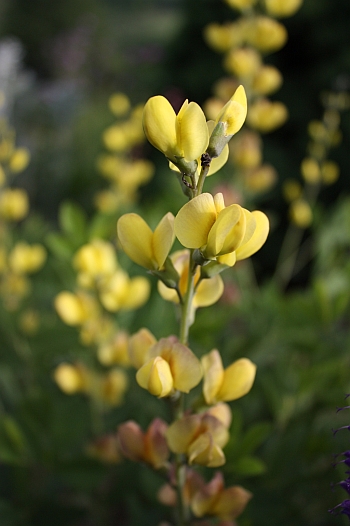
Sigh.

